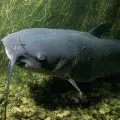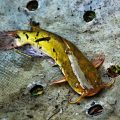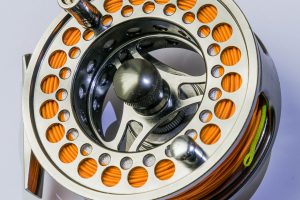Catfish are opportunistic, voracious feeders who scavenge for their food. Catfish are primarily a bottom feeder looking to scavenge for food but could be in different areas during the day. They eat at all times of the day but do prefer to be in darker areas which would be under other structures and in muddy areas. Being cold-blooded they are less active in the colder months, but they stay inactive when it is very hot.
Catfish are not picky eaters, but they still do not eat every food that their senses lead them to. First, they locate a potential source of food and swim to it. Then they pick it up in their mouths, where the taste buds relay the message to their brain. Then the brain decides whether the food is edible or not.
It is, then the food will immediately be gobbled up, but if not, the catfish will spit out the food and continue its search. The decision is made by taking the result of every sensory cue available to them into account, including their vision and smell. The search for food is like a trial-and-error process, usually for catfish that are blind or have poor eyesight.

Do catfish feed on the top or bottom?
There is a common misconception that catfish are exclusively bottom feeders, but that is not the case. Catfish do not always stay at the bottom; sometimes, they even come up to the surface. However, they remain at the bottom and scavenge for food in the mud for the most part. You will have to dive into the deep water to locate most of the time, but other times, they will move to the shallows for the purpose of feeding. This depends on the time of day, as well, as the temperature. You will not see them at the top too often, but it is not entirely impossible.
Where do catfish feed day and night?
You might have heard anglers say that it’s better to go catfishing at night and wondered why exactly that’s the case. The truth is, it’s not that you cannot go hunting for catfish during the daytime and must only go during the night. Rather, it is simply easier to catch one at night, but you can still catch a catfish during the day if you know where to throw the bait.
Catfish do not eat only at a specific time of the day; their meals go on all around the clock. They will surely grab bait during the day, but only when the bait is thrown in their preferred location, as in, the spot of the water where they congregate to eat during that time period. Catfish tend to be in darker, covered, and structure-driven areas beneath the water surface during the daytime. Usually, it’s because they cannot handle too much light and heat from the sun.
On the other hand, when the sun goes down, and the stars come up, catfish relocate themselves to a higher area within the water body. That isn’t to say they drift too far from the bottom; they still like to remain close to it, but they do hang out on a higher level, and that’s where they typically search for food at that time. Considering the time of day, you have to determine the perfect spot for throwing in the bait.
Do seasons impact catfish feeding?
The time of day is not the only factor that influences the feeding location of catfish. In fact, it is heavily influenced by the season, and sometimes by the weather too. Catfish stay in different locations of the water to feed, depending on the temperature of the day or period. In other words, they are reactive to seasonal changes.
For example, they stay more active during cooler times of the day than during prolonged periods of warm temperatures. You will find them looking for food during the night, early morning, or late afternoon. Thus, in late spring, summer, and early fall, the best times of day to catch catfish will be when temperatures are at their coolest. Depending on the time of the day, their location will also be in the manner mentioned earlier. And you can fish for them accordingly.
During winter, it’s just the opposite. In that season, they seek warmer places and remain active during the warmer periods of the clock. They will be more active during the daytime, but not so much during the nighttime. The warm temperature of the day will make them energized, and they will all gather in warmer portions of the water in large numbers. If you can locate that spot, fishing will become very easy.
How do catfish find food?
Catfish are built in such a way that scavenging food is way too easy for them because they have many ways and means of doing it. The main part of their body they use to find food is by using their whiskers, known as barbels. The barbels are equipped with tiny taste buds and olfactory senses. These help them achieve a sense of taste and smell, which helps them navigate through the water in search of food. They can smell food from quite a far distance and follow it in the darkness.
Moreover, the chemoreceptors spread all over their bodies also act as taste buds. They can practically taste the water as they swim through it — through their bodies. In fact, a catfish of just 6 inches in length has more than a quarter-million taste buds on its body. You basically cannot touch any part of a catfish without touching hundreds of taste buds at once. That’s why they are known as one of the most sensory perceptive species in the world.
They also have the ability to electroreceptor, just like sharks do. Through this, they can detect electrical fields in living organisms and thus locate a source of food. However, this ability can work within a small boundary, in contrast to the sense of smell they receive from their barbells. They usually use it to dig in the mud and find potential foods like insect larvae and worms. They tend to use all their senses when feeding which leads into their digestion.











